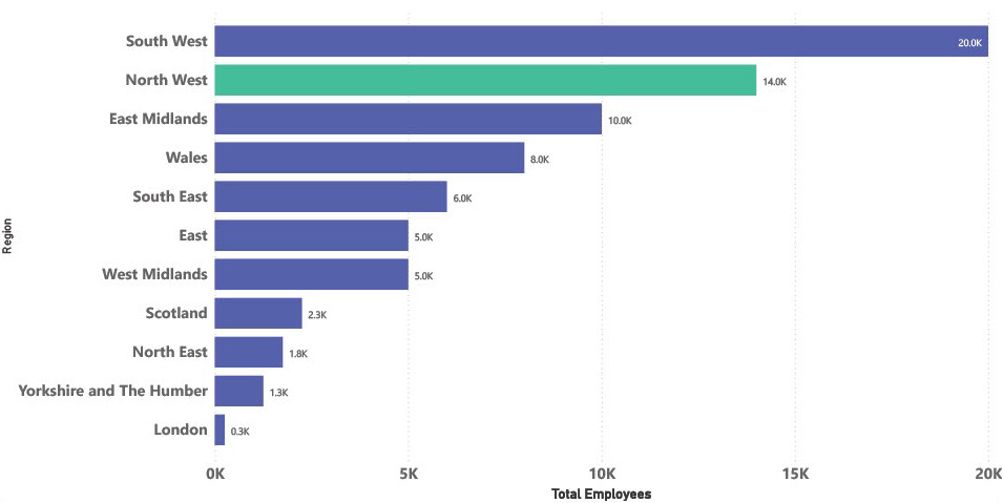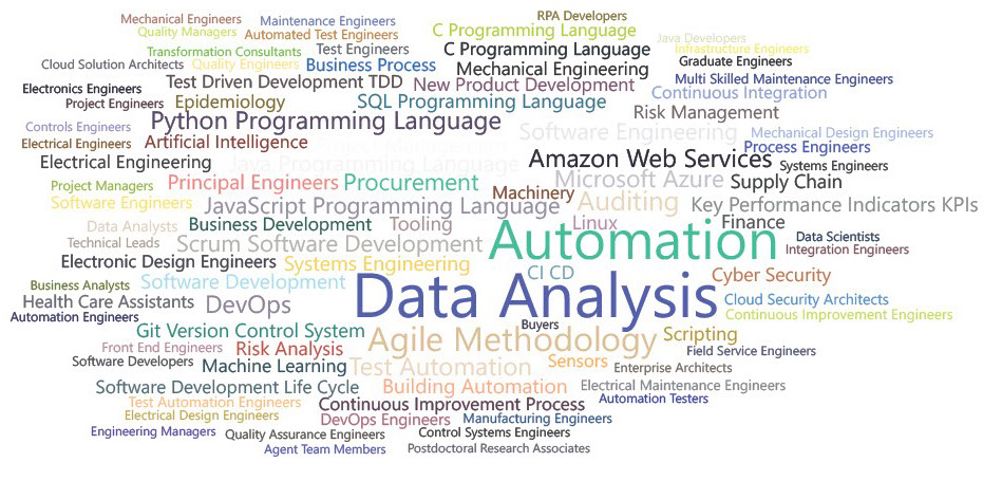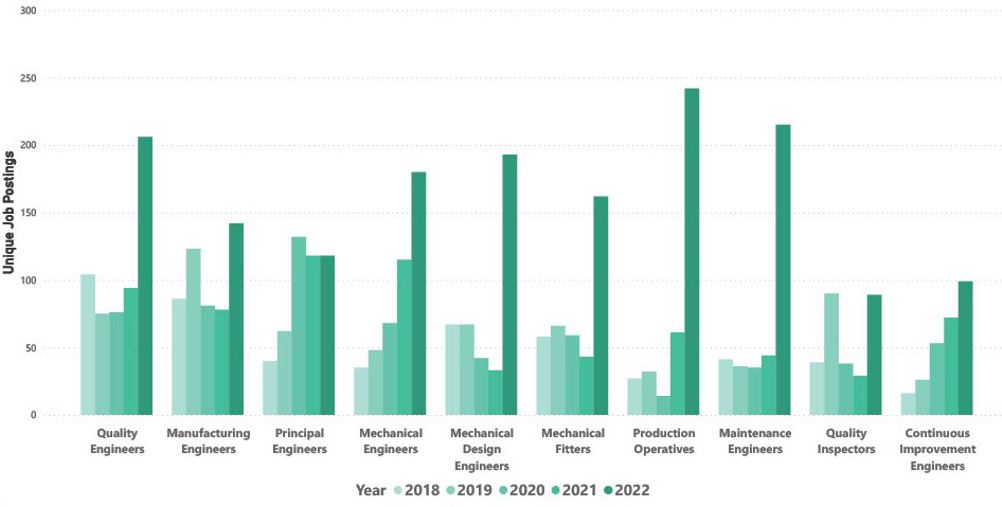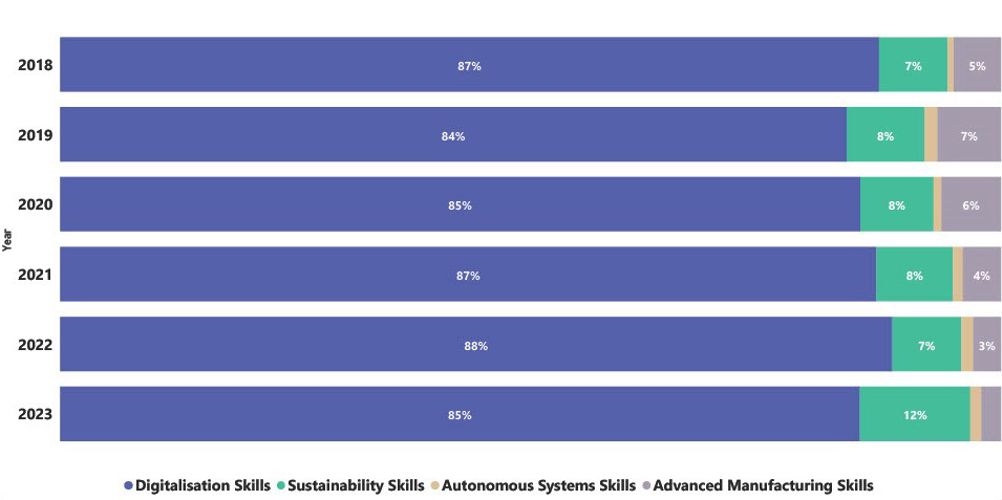In the second part of this series on the implications of emerging technologies for engineering and manufacturing labour and skills, we turn our attention to the Aerospace and Defence industry in the North West. The North West has a rich history in Aerospace and Defence, with major players such as BAE Systems, Rolls-Royce, and Airbus Defence and Space, all having well-established operations in the region. According to the ADS Group, the industry has an optimistic outlook for 2023 despite a challenging end to 2022, stating that the Aerospace and Defence sector is expected to experience growth due to increasing competition, technological advancements, and the need for sustainability.
The Aerospace sector is the region’s single largest manufacturing employer, making up five per cent of the North West’s manufacturing workforce. Figure 1 illustrates the distribution of the aerospace industry workforce by region in Great Britain.

The Aerospace and Defence industry faces significant challenges from increased competition, climate change and technological advancements. Enginuity has consolidated five key industry technology roadmaps to identify the prevalent themes and key technologies which will shape the development of the industry in the North West and its demand for skills.
Sustainability: With an aim to achieve net-zero emissions by 2050, the industry is investing in new propulsion technologies, including electric and hybrid-electric systems, sustainable aviation fuels, and hydrogen power.
Digitalisation: Digital technologies, such as artificial intelligence, robotics, and automation, are being adopted to improve efficiency, safety, and reduce costs. Figure 2 shows the job roles and skills related to digitalisation that are in demand in the industry in the North West.

Advanced Manufacturing: Additive manufacturing, including 3D printing, is revolutionising the production of complex parts by enabling faster and cheaper processes.
Autonomous Systems: The development of drones and unmanned aerial vehicles (UAVs) has applications in logistics, search and rescue, and surveillance, presenting new opportunities for growth.
The Aerospace and Defence industry faces significant challenges from increased competition, climate change, and technological advancements. To meet these demands, there will be continued demand for skilled workers in the North West’s Aerospace and Defence industry to ensure the region fully benefits from the key technologies and themes identified in the consolidated roadmaps. The impact of these themes and technologies on the region can be analysed across key dimensions including:
Workforce Development: The adoption of new technologies will lead to a shift in the skills required by the Aerospace and Defence industry. The North West can leverage its educational institutions and training programs to develop a workforce skilled in advanced manufacturing, AI (Artificial Intelligence), robotics, and sustainable aviation technologies. This will not only help address the industry’s changing needs but also provide new career opportunities for the local population.
Skilled Workforce: As the industry adopts new technologies, employers require highly skilled workers in engineering, software development, and digital technologies. Upskilling the current workforce and investing in training and development programs are crucial to meet the emerging challenges. Collaboration between industry players, academic institutions, and government initiatives such as Innovate UK’s Skills Foresighting can help to identify future skills and knowledge, to feed into tailored curricula and training programs that focus on the specific needs of the aerospace and defence industry. This will ensure a steady supply of skilled professionals who are adept at handling new and emerging technologies. Figure 3 shows the job roles in demand by the industry in the North West.

Environmental Impact: The focus on sustainability and carbon reduction in the Aerospace and Defence industry will have positive environmental impacts for the North West. By investing in sustainable aviation fuels, electric and hybrid-electric propulsion systems, and hydrogen power, the region can contribute to reducing the industry’s carbon footprint and tackling climate change. This will not only help meet the industry’s environmental targets but also improve the region’s air quality and overall environmental well-being. Figure 4 shows the demand for job roles driven by technological changes.
The Aerospace and Defence industry in the North West is expected to experience growth in 2023. The consolidation of five key industry technology roadmaps by Enginuity highlights the prevalent themes and key technologies that will shape the development of the industry in the North West and its demand for skills.
To meet these demands, upskilling the current workforce and investing in training and development programs are crucial. Collaboration between industry players, academic institutions, and government initiatives can help identify future skills and knowledge and feed into tailored curricula and training programs that focus on the specific needs of the Aerospace and Defence industry. By investing in sustainable aviation fuels, electric and hybrid-electric propulsion systems, and hydrogen power, the region can contribute to reducing the industry’s carbon footprint and tackling climate change.

The North West is well-positioned to leverage its educational institutions and training programs to develop a workforce skilled in advanced manufacturing, AI, robotics, and sustainable aviation technologies. This will not only help address the industry’s changing needs but also provide new career opportunities for the local population. By investing in education and training programs, the region can ensure that the Aerospace and Defence industry has access to the skilled workforce required to meet its technological needs, thereby ensuring its continued growth and success.
Comment: Ann Watson - CEO, Enginuity
BOX OUT – AnnWatson The Aerospace and Defence industry in the North West is shifting to meet the challenges from increased competition, climate change and technological advancements. The region has a strong history in the sector, with major players such as BAE Systems and Rolls-Royce investing heavily in emerging technologies such as electric and hybrid propulsion, UAVs, and next generation fuel systems. Like the Midlands, the North West is faced with significant challenges in obtaining the skilled workforce required to support these emerging technologies. However, initiatives such as apprenticeships and training programmes are being developed to address these challenges and ensure the region has a talent pipeline that delivers the new skills required. Collaborations between industry, education, and skills stakeholders, including the work being done by Enginuity, are essential to make the most effective sustained investment in skills development and take best advantage of the training programmes and apprenticeships being developed.
Enginuity is a registered charity which acts as the sector connector for the advanced manufacturing and engineering industry. We marry engineering skills with ingenuity with data to design and constantly improve tools and solutions that enable individuals, employers, education providers and governments to plan and meet their skills and workforce needs. See Enginuity.org to find out more.
CLICK HERE FOR MORE UK REGIONAL ANALYSIS











Microplastics evading capture in wastewater treatment
Can anyone provide a link to a credible peer-reviewed study demonstrating toxicity from microplastics? This report uses words like ´potential´ and...